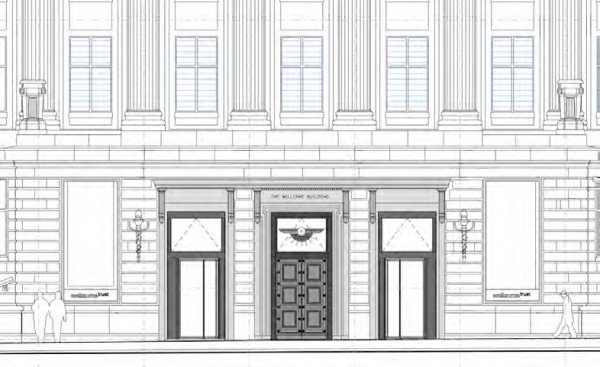Overview
We have had some notable successes in shaping development in our conservation areas.
We like to work positively with developers to guide development at an early stage of proposals, and we have had some notable successes by doing this effectively. Inevitably there are times when developers think they know better than our advice, and in these unwelcome scenarios we have succeeded in having their applications refused at planning committee stage.
British Museum Extension
The British Museum were intent on building an overbearing and entirely inappropriate north-west extension to their premises which would have blocked natural light to the renowned central arched Smirke Reading Room, and would have impacted dramatically on important views from Bloomsbury's most important and well-preserved square, Bedford Square.
Somewhat ironically for an internationally acclaimed museum of human history, the British Museum seemed entirely uninterested by concerns of local heritage and refused to heed our advice.
The application was recommended for approval by Camden's planning officer who was also largely uninterested in concerns that we were raising. But at the planning committee stage, our extensive campaign and deputation led to a number of questions, which ended up with the application being refused.
The British Museum were forced to redesign their proposals, with the extension dramatically reduced in height so that it could not be seen at all from Bedford Square, and no longer blocked any light to the arched reading room.
A great deal of time, effort, and money could have been saved if the developers had heeded our advice at an early stage.
The Wellcome Institute
We met a number of times with Jim Eyre of Wilkinson Eyre to discuss the addition of two new entrances to the facade of the Wellcome Institute on Euston Road. The architects' solution to the problem addressed both the functional needs of the Institute and respects the syntax of the fine classical façade with new stone entablature and scrolls over the two revolving doors.
It is an exemplar of how modern interventions in our conservation areas can effectively preserve their appearance.

Strand Union Workhouse
The Strand Union Workhouse on Cleveland Street is the last remaining Poor Law workhouse building in London, and was said to be the inspiration for the workhouse in Oliver Twist, Charles Dickens having lived nearby for a time.
Despite its historical importance it came under threat of total demolition.
We campaigned strongly with other local groups to save the building, and were successful when Heritage Minister John Penrose had the building Grade II listed.
He had this to say of the building:
This austere and imposing building is an eloquent reminder of one of the grimmer aspects of London’s 18th century social history. Some claim that it was the inspiration for the workhouse in Charles Dickens’ Oliver Twist, but whether it was or it wasn’t, we know that it is the sole survivor of the workhouses that were operating in the capital when Dickens wrote his famous novel, and that as a young man he lived just nine doors along from it. It is undoubtedly an important and interesting part of our history and heritage, and deserves the extra protection that listing provides.